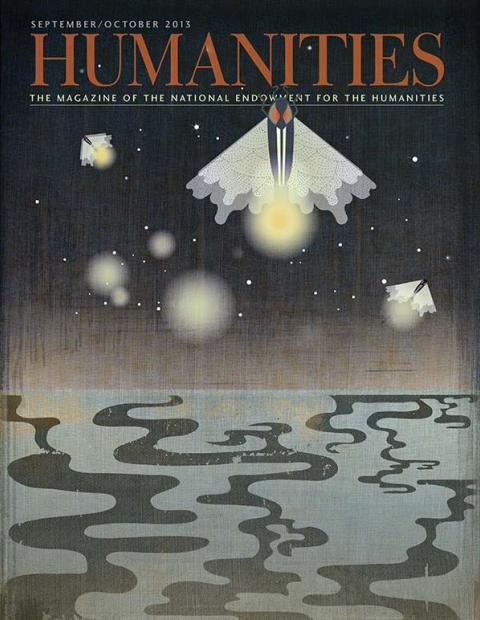“It’s boring almost beyond belief,” British rock critic Nik Cohn wrote of the Beatles’ self-titled album shortly after it came out in November of 1968. Cohn’s brickbat was just one of two negative reviews the New York Times published upon the release of The Beatles. (You probably know it better as the White Album.) Those responses, though, may say less about the record’s virtues than the way it upended listeners’ expectations. On 1967’s Sgt. Pepper’s Lonely Hearts Club Band, the Fab Four polished its pop instincts. The Beatles, by contrast, was scruffy and centerless, its thirty songs encompassing mock-Beach Boys vocal harmonies (“Back in the U.S.S.R.”), psychedelic folk (“Wild Honey Pie”), proto-punk (“Helter Skelter”), sound collage (“Revolution 9”), and plenty more besides.
“Everybody’s going to find something to love and hate on it,” says Indiana University music professor Glenn Gass, who has taught a course on the Beatles since 1982. “And in that way it not only summed up the history of rock and pop styles in the twentieth century but also predicted the eclectic, all-over-the-map world we’ve been living in ever since.”
In June, Gass considered the album as part of INconversation, a public discussion series presented by Indiana Humanities. (Past participants have included newscaster Jim Lehrer, Indianapolis Symphony Orchestra president and CEO Gary Ginstling, and artist Kim Beck.) The event’s inspiration was “We Buy White Albums,” an exhibit at the Indianapolis Museum of Contemporary Art featuring artist Rutherford Chang’s collection of more than 750 used White Album LPs. Displayed en masse, the album transforms into a series of distressed blank canvases, revealing scribblings and signs of wear—a fitting showcase for a record that seems practically engineered to absorb what listeners project upon it.
The album’s shuffle-mode qualities echoed the messy circumstances of its creation. After spending early 1968 in India practicing meditation with Maharishi Mahesh Yogi, the group returned to England for months of fractious recording sessions. John Lennon brought his divisive new girlfriend, Yoko Ono, into the studio, and the band’s work process grew less collaborative. (Ringo Starr briefly quit the group in frustration, which is why Paul McCartney plays drums on “Back in the U.S.S.R.”) “[Manager] Brian Epstein died, Yoko comes in, John gets divorced, it’s chaos,” Gass says. “And you can hear that on the album as well. That beautiful, smooth, Sistine Chapel is starting to crack.”
The album marked the starkest split to date in Lennon and McCartney’s songwriting styles. Lennon favored abstraction and catharsis (“Everybody’s Got Something to Hide Except Me and My Monkey,” “I’m So Tired”), while McCartney emphasized brashness and high spirits (“Ob-La-Di, Ob-La-Da,” “Why Don’t We Do It in the Road?”) The musical sprawl prompted the Beatles’ longtime producer, George Martin, to say The Beatles should have been a single, more coherent album. That, in turn, has inspired a popular fan exercise: If you could fill only one disc, which White Album tunes would you include?
For Gass, the question is as much a cultural Rorschach test as it is a parlor game. When he began teaching his Beatles course, Lennon’s murder in 1980 was fresh in students’ minds, and his songs tended to be favored. “For years it was ‘Saint John the Beatle’ and Paul was kind of a lightweight,” he says. Now, though, Lennon’s contributions are a harder sell. “I have to go to bat not only for ‘Revolution 9’ but ‘I’m So Tired,’ ‘Happiness Is a Warm Gun’—the weirdness that John brought that makes it so wonderful,” he says.
While the band was meditating in India and recording in London, the Vietnam War intensified, students rioted in Paris, protesters clashed with Chicago police at the Democratic National Convention, the Prague Spring came and went, and Martin Luther King Jr. and Robert F. Kennedy were assassinated. That the Beatles’ response was an at-best ambivalent song like “Revolution 1” (“But when you talk about destruction / Don’t you know you can count me out”) left some feeling the Beatles had squandered their bully pulpit. (One critic called the song a “lamentable petty bourgeois cry of fear.”) The passing decades, though, have made the unsettled feel of the album as effective a time capsule as any call to arms.
“After Pepper, everybody said, ‘What do we do now?’” Gass says. “I think the White Album proved to be a perfect answer to that question: Do the opposite. Sixty-seven was peace and flowers, and ’68 was clenched fists and total chaos. I think in spite of all the people who condemned them for not embracing the times more, I think they reflected the times really well with that album.”


